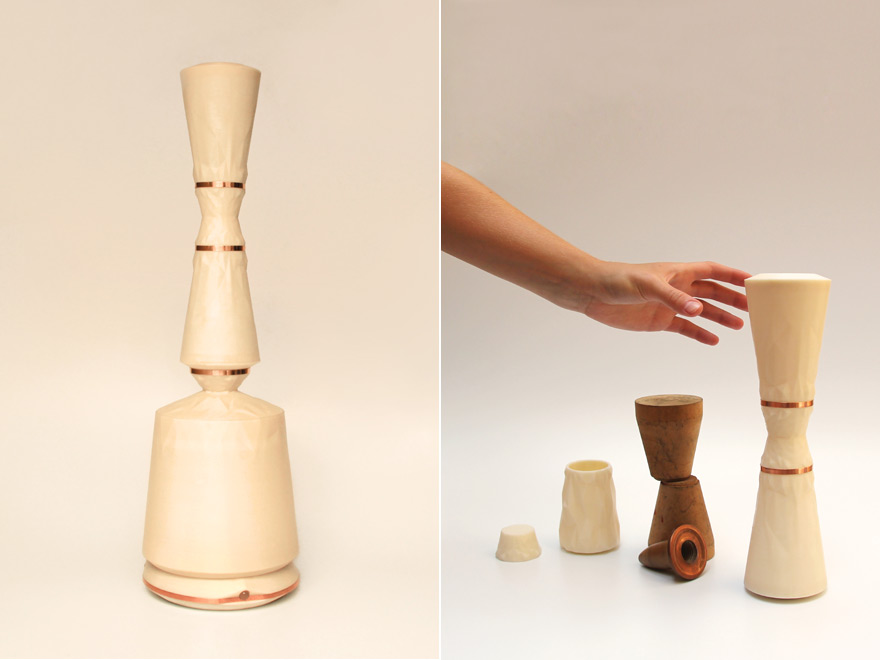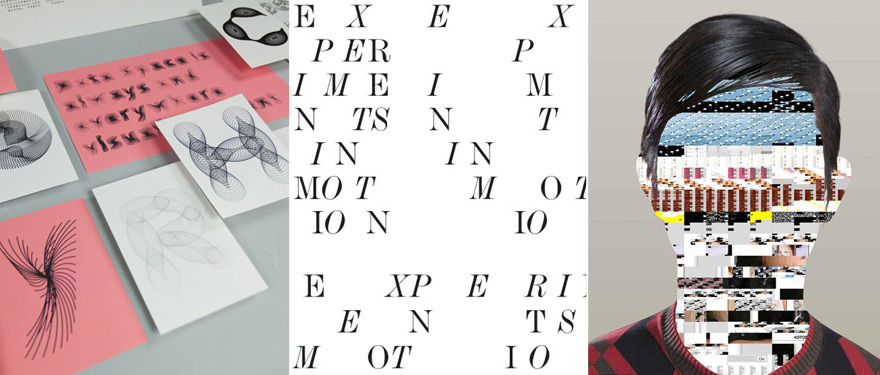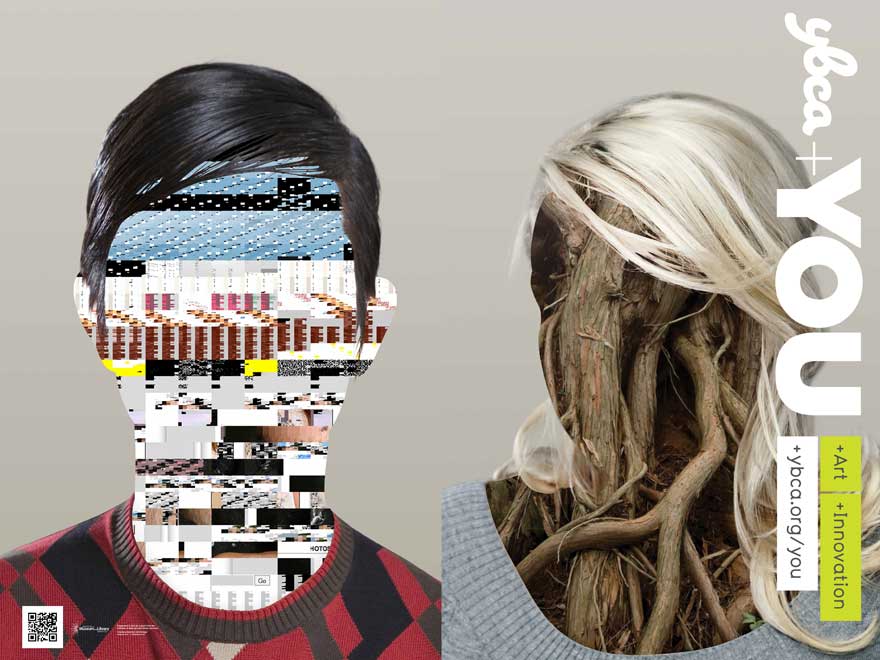![C77DA13-grade.jpg]()
![ImageMontage10.jpg]()
Over the next few weeks we will be highlighting award-winning projects and ideas from this year's Core77 Design Awards 2013. We will be featuring these projects by category, so stay tuned for your favorite categories of design! For full details on the project, jury commenting and more information about the awards program, go to Core77DesignAwards.com.
Student Runner-Up
![Playmap_C77_Post.jpg]()
Project Name: PlayMap
Designers: Daniel Chang, Maeve Jopson, Karan Mudgal and Cynthia Poon
Rhode Island School of Design
![PlayMap_Headshots.jpg]()
The PlayMap is an educational toy for blind children that communicates the abstract concepts of geography through a textured, transformable model of the earth. Held together with magnetic connections, it is an icosahedron globe that unfolds into a flat map of the world. The PlayMap promotes the understanding of scale, spatial relationships, and cause and effect, allowing children to explore and gain independence through tactile play. Each continent is a removable piece that snaps into place with magnets, enforcing the development of motor skills. Made from EVA foam, the PlayMap is lightweight, durable, and easy to clean.
- How did you learn that you had been recognized by the jury?
We found out while watching the live stream and were so excited to hear our names! Then about a week later, Maeve was checking her spam folder and found the email announcement... whoops.
- What's the latest news or development with your project?
Two of our team members, Cynthia and Maeve, are building a company around the idea of inclusive play, and the PlayMap is the first of a line of play materials for kids of all abilities. We are beginning to fundraise to source manufacturers, and our goal is to get it into the hands of kids as soon as possible.
We call ourselves Increment; we love the idea of incremental learning as it applies to toys and tools that kids can grow with, and it's one of the major things that we value in what we make. Check out our progress at incrementstudios.com!
- What is one quick anecdote about your project?
During testing, we were able to watch a blind student and her teacher interact with the PlayMap and fit it into the current lessons of the school day. It was amazing to see how applicable it is to many learning situations. Since the PlayMap, Cynthia and Maeve designed two more toys focused on sensory learning, and have been testing them with blind students at local schools. Seeing excitement from the kids and gaining approval from teachers and therapists has been incredibly rewarding and encouraging. We are looking forward to producing these products and bringing more fun to classrooms everywhere!
- What was an "a-ha" moment from this project?
When we first began our research, we interviewed several blind adults about day-to-day life as well as specifics about technology, interactions, transportation, hobbies, and favorite and least favorite products. We also wanted to (at least briefly) experience what it is like to be blind, so we blindfolded ourselves and went to play with toys in Walmart. After these experiences, we realized that our assumptions kind of made us feel like... well... condescending assholes.
The toy testing began as what we believed would be a tool for empathy, and we did begin to think more about tactility and hierarchy of features, but we realized that role playing activities are far from sufficient in understanding our market. While trying to put yourself in someone elses shoes is a valid research method, in this case we found we were perpetuating blind stereotypes, and what we learned from interviewing blind individuals, is that they are just as capable of independently accomplishing what they want to as anyone else, they simply go about it in a different way. It is very important early on for any child to gain independence and an awareness of the world around them. The primary way that kids learn is through play. Our mission is to create play materials that facilitate collaborative play and learning for children of all abilities.
Student Notable
![ylly2_C77_Post.jpg]()
![Headshot.jpg]()
- Project Name: y.l.l.y
- Designer: Hansel Schloupt
The ylly project is a tool of communication and imagination for autistic children. It's a game presented with different pieces and colors separated that are put together by the players to build a sculpture based on relations, exchange, imagination, creation and common help. The project goal is to create a relation through products. How can children create a relation without talking? Products are important; they are a way to express ourselves. In the game they use it to base a relation with their partners, to express an artistic creation and an identity through the results.
- How did you learn that you had been recognized by the jury?
I was watching at home the online live broadcast on the Core77 Design awards website. I never experimented a social live announcement like this and I thought that would be exciting and interesting to live it. It was a great and strange sensation to hear my name from San Francisco by internet here in France.
- What's the latest news or development with your project?
After finishing the school project I met with Dr. Gepner again to talk about the changes we wanted to proceed and the details we wanted to be better, based on what we saw on the first user tests. Now we would like to do a strong protocol of user test on few weeks with autistic children and children without autistic disorder and also with different games to compare with our y·l·l·y game. For this, we need to produce at least 3 or 4 full prototypes in good conditions with all the changes and we are looking for contributors and some external investments to make this dream come true. If the full protocol secures us about the interaction and all the work we've done so far, then we will start making this project a real product.
- What is one quick anecdote about your project?
The quick anecdote about the project is maybe the fact that when I was a kid I had a medical disorder (I was 7 years old) and I had to wear a protective corset during almost 11 years of my life until I've been cured at 18 years old in Barcelona. So when I started my studies on industrial design in Barcelona, I really wanted to do something with disorder and childhood, but I didn't want to do something purely medical, because when you are a kid who needs medical help and has medical products around him, this environment doesn't make you feel better in a psychological way. So I guess that's the reason why I wanted to do something that is artistic, natural and helpful at the same time and it's what make y·l·l·y a very nice game because it can help autistic children but it can be a social game for any other child who wants to play and that doesn't make autistic children different. The great think about design for all.
- What was an "a-ha" moment from this project?
The "a-ha" moment, like in many research, strategy or human-centered design projects, is when insights are coming up and make everything so clear and so natural in a problem that has not been solved yet. We discovered that we had to design a game that has no way to be "fixed". Autistic children use product in different ways that designers think about and they tend to do many rituals with (for example the cars that our putting in line etc...). So we decided just to make pieces that have no direction, no figurative forms or way to be, so that way pieces are just an excuse to build, to connect and to imagine a circuit by the users collaborating together. The fact that pieces are a personal contribution of each player on the full game is also because autistic children are communicating through, what it's called in a medical way "transitional objects" (doodles, pictures...).
(more...)![]()
![]()
![]()
![]()
![]()
![]()
![]()








 Echo & Alterego
Echo & Alterego


















 Images via
Images via 


 Image via
Image via 

































 Left: Ohrenstein adjusting the seat of his Opus Chair. Right: Ohrenstein also designed an accompanying Opus Table, seen here in the background
Left: Ohrenstein adjusting the seat of his Opus Chair. Right: Ohrenstein also designed an accompanying Opus Table, seen here in the background








